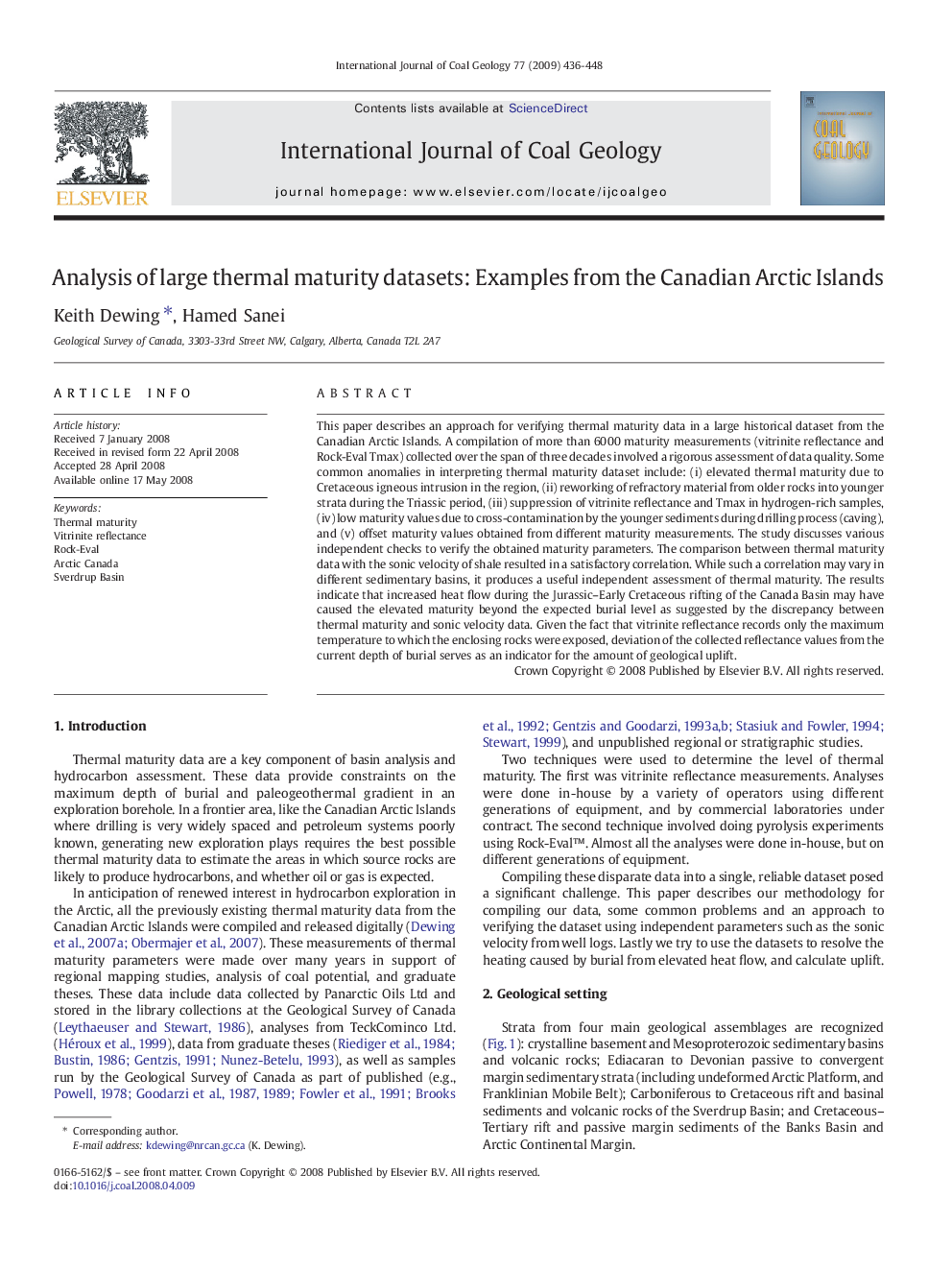| Article ID | Journal | Published Year | Pages | File Type |
|---|---|---|---|---|
| 1754106 | International Journal of Coal Geology | 2009 | 13 Pages |
Abstract
This paper describes an approach for verifying thermal maturity data in a large historical dataset from the Canadian Arctic Islands. A compilation of more than 6000 maturity measurements (vitrinite reflectance and Rock-Eval Tmax) collected over the span of three decades involved a rigorous assessment of data quality. Some common anomalies in interpreting thermal maturity dataset include: (i) elevated thermal maturity due to Cretaceous igneous intrusion in the region, (ii) reworking of refractory material from older rocks into younger strata during the Triassic period, (iii) suppression of vitrinite reflectance and Tmax in hydrogen-rich samples, (iv) low maturity values due to cross-contamination by the younger sediments during drilling process (caving), and (v) offset maturity values obtained from different maturity measurements. The study discusses various independent checks to verify the obtained maturity parameters. The comparison between thermal maturity data with the sonic velocity of shale resulted in a satisfactory correlation. While such a correlation may vary in different sedimentary basins, it produces a useful independent assessment of thermal maturity. The results indicate that increased heat flow during the Jurassic-Early Cretaceous rifting of the Canada Basin may have caused the elevated maturity beyond the expected burial level as suggested by the discrepancy between thermal maturity and sonic velocity data. Given the fact that vitrinite reflectance records only the maximum temperature to which the enclosing rocks were exposed, deviation of the collected reflectance values from the current depth of burial serves as an indicator for the amount of geological uplift.
Related Topics
Physical Sciences and Engineering
Earth and Planetary Sciences
Economic Geology
Authors
Keith Dewing, Hamed Sanei,
